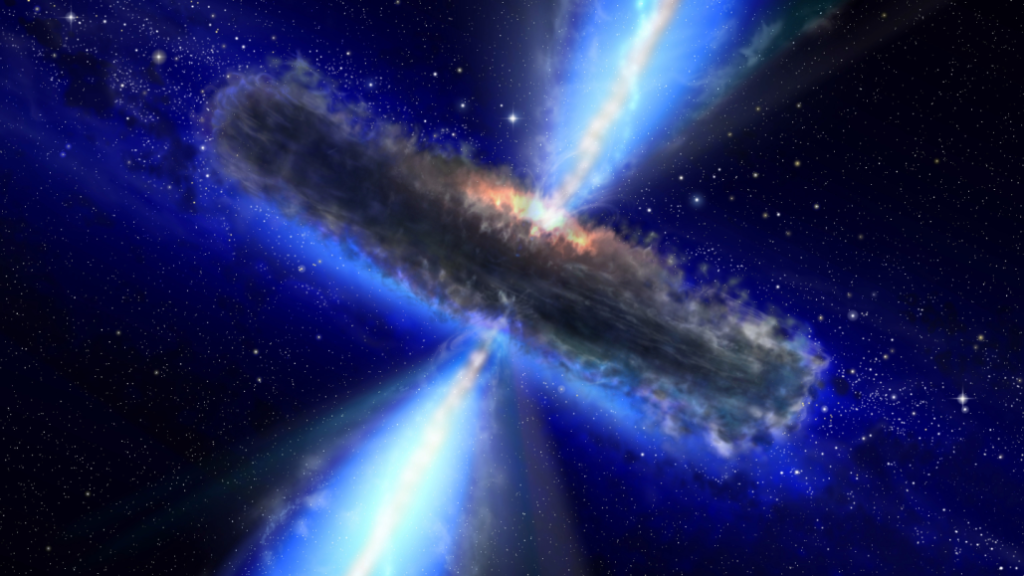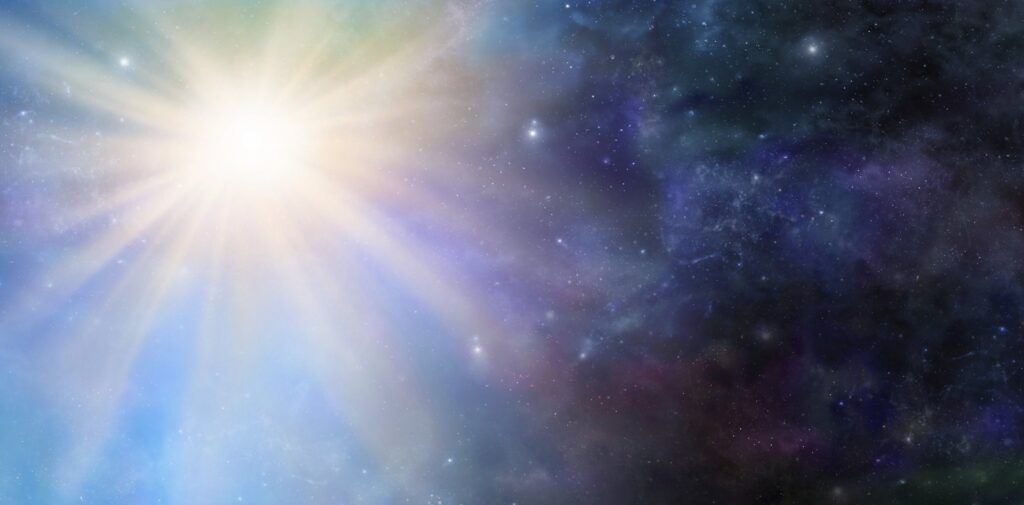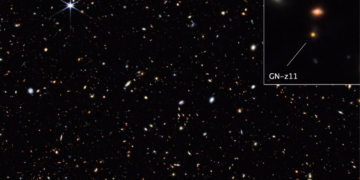Imagine looking back in time, to when the universe was just a tiny fraction of its current age, about 430 million years old. What would you see? How would the first galaxies look like? How did they form and evolve? These are some of the questions that astronomers have been trying to answer for decades, using the most powerful telescopes ever built. And now, thanks to the James Webb Space Telescope, they have made a breakthrough discovery that sheds new light on one of the most mysterious and distant galaxies ever seen: GN-z11. In this article, we will explore what GN-z11 is, why it is so important, and how Webb has revealed some of its secrets. We will also discuss the implications of these findings for our understanding of the early universe, especially the formation and evolution of galaxies and black holes, and the role of the first stars in shaping the cosmic dawn. If you are curious about these topics, stay tuned and keep reading!
Main findings
The farthest active supermassive black hole

One of the most surprising and exciting discoveries made by Webb is that GN-z11 is hosting a central, supermassive black hole that is rapidly accreting matter, making it the farthest active supermassive black hole spotted to date. A supermassive black hole is a massive object that has such a strong gravitational pull that nothing, not even light, can escape from it. They are usually found at the centers of galaxies, and they can grow by swallowing gas, dust, stars, and other matter. When this happens, some of the matter is converted into energy and radiated as light, creating a bright and hot region around the black hole called an accretion disk. This process is called active galactic nucleus (AGN) activity, and it can be detected by observing the spectrum of light emitted by the accretion disk.
Webb used its Near Infrared Spectrograph (NIRSpec) instrument to observe the spectrum of GN-z11, and found that it has a strong and broad emission line of hydrogen-alpha, a type of light that is produced when hydrogen atoms are excited by high-energy radiation. This emission line is a clear signature of AGN activity, and it also allows astronomers to measure the mass and the accretion rate of the black hole. Based on the width and the intensity of the line, they estimated that the black hole has a mass of about 100 million times that of the sun, and that it is accreting matter at a rate of about 10 times that of the Milky Way’s central black hole. This means that the black hole is very massive and very hungry, and that it is producing a lot of energy and radiation that can affect the surrounding galaxy.
The discovery of an active supermassive black hole in GN-z11 is remarkable for several reasons. First, it pushes the record of the farthest known AGN by more than 150 million years back in cosmic history, to when the universe was only 3% of its current age. Second, it challenges the current theories of how supermassive black holes form and grow in the early universe, as they require a lot of time and matter to reach such masses and accretion rates. Third, it opens up new possibilities for studying the effects of AGN activity on the evolution of the first galaxies, such as how they regulate star formation, how they shape their morphology, and how they enrich their interstellar medium with metals.
The first stars in the universe

Another intriguing and tantalizing discovery made by Webb is that GN-z11 may be hosting some of the first stars in the universe, the so-called Population III stars. These stars are believed to have formed from the primordial gas that was mostly composed of hydrogen and helium, with no traces of heavier elements (also known as metals) that are produced by nuclear fusion in later generations of stars. Population III stars are expected to be very massive, very hot, very bright, and very short-lived, ending their lives in spectacular explosions called supernovae. These supernovae are responsible for seeding the universe with the first metals, and for triggering the formation of the next generation of stars, the Population II stars.
Webb used its Near Infrared Camera (NIRCam) instrument to observe the image of GN-z11, and found that it has a very irregular and clumpy shape, with several bright knots of light scattered across its disk. These knots are likely to be regions of intense star formation, where new stars are being born from the gas and dust in the galaxy. However, what is really interesting is that some of these knots have a very blue color, indicating that they are very hot and very young. In fact, they are so blue that they could be hosting some of the elusive Population III stars, the first to bring light to the universe.
The detection of Population III stars in GN-z11 is not yet confirmed, as it could also be explained by other factors, such as dust extinction, metallicity variations, or stellar rotation. However, it is a very promising and exciting possibility, as it would provide the first direct evidence for the existence of these stars, and the first opportunity to study their properties and their impact on the early universe. Population III stars are crucial for understanding how the first galaxies formed and evolved, how the first metals were created and distributed, and how the first seeds of supermassive black holes were planted.
Implications
The findings of Webb on GN-z11 are not only amazing and fascinating, but also very important and significant for our understanding of the early universe. They reveal new aspects of one of the most mysterious and distant galaxies ever seen, and they shed new light on some of the key questions and challenges that astronomers have been facing for decades. They also demonstrate the power and the potential of Webb to probe the deepest and the darkest corners of the cosmos, and to uncover secrets that have been hidden for billions of years. Webb is truly a game-changer for the field of astronomy, and it is opening a new window to the cosmic dawn, the era when the first stars and galaxies emerged from the darkness and illuminated the universe. We can expect more discoveries and surprises from Webb in the future, as it continues to explore the wonders and mysteries of the early universe.



















